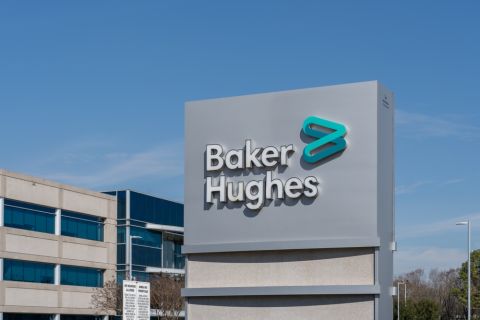
It’s safe to say that only the biggest football fans and children looking forward to a visit from Santa are looking forward to the fall and winter seasons more than hydrocarbon producers and midstream operators. A temperate summer failed to deliver a significant uptick in cooling demand necessary to work off gas storage and crude continued to stutter at its lowest levels in years without much hope of a quick turnaround.
While natural gas storage levels are hovering around the five-year average, improved drilling efficiency is causing fears that a price drop is around the corner in order to prevent storage from reaching capacity. The NGL market is experiencing a similar situation with widespread ethane rejection for the past few years and record propane storage levels for summer this year are causing a severe price downturn. Heavy NGL prices are also suffering due to a crude market that is oversupplied and experiencing large storage levels.
Production hasn’t decreased at a fast enough level for gas, liquids or crude and storage has built to the point where it may take a strong surge in demand to effectively rebalance these markets. This is especially true for propane, which is expected to have a ceiling of 50 cents per gallon (/gal) for the upcoming heating season.
There is good news amid this negativity and that’s in the form of ethane and West Texas Intermediate (WTI) crude. The industry’s rejection policy toward ethane is beginning to pay off and it is expected that prices will begin to turn to a marginally positive state before the end of the year, while crude demand is increasing thanks to WTI prices trading below $45 per barrel. Though neither product can be expected to reach its highs from in the past 10 years, these markets may be slowly recovering.



In fact, ethane was the lone NGL to improve at both Conway and Mont Belvieu this week as the market continued to react positively to news that storage levels decreased in May, according to the most recent data from the U.S. Energy Information Administration (EIA). The Mont Belvieu price rose 4% to 19 cents/gal, its highest value since the last week of May. The Conway price increased 11% to 17 cents/gal, the highest it has been since the week of April 22. Though these prices are still unprofitable, they are closing in on that status and will need to do so to encourage the transportation of supplies to the Gulf Coast as demand will begin to increase this fall.
As crude oil prices have crumbled, demand has increased. The International Energy Agency (IEA) reported in its Oil Market Report for August that demand for 2015 has increased by 1.6 million bbl/d, which is a 200,000 bbl/d increase from its July report. This is the fastest growth rate for crude demand in the past five years, which the agency credits to solid economic growth and a response to lower crude prices. Further, the IEA is forecasting 2016 crude demand to increase by 1.4 million bbl/d. This should help support an improvement in WTI and Brent crude, but the record storage levels for crude is expected to keep a ceiling on this growth for the next 12-18 months.
Somewhat surprisingly natural gas prices rose above $2.80 per million Btu at both hubs as there was a slow build in storage, according to the latest data from the EIA. The week of August 7 saw storage levels increase by 65 billion cubic feet to 2.977 trillion cubic feet (Tcf) from 2.912 Tcf the previous week. This was 21% greater than the 2.456 Tcf posted last year at the same time and 3% greater than the five-year average of 2.896 Tcf. Cooling demand should increase this week as the National Weather Service is forecasting warmer-than-normal temperatures throughout the country.
The upswing in margins was limited as gas prices rose with only Conway ethane improving at either hub. The most profitable NGL to make at both hubs was C5+ at 65 cents/gal at Conway and 66 cents/gal at Mont Belvieu. This was followed, in order, by isobutane at 22 cents/gal at Conway and 23 cents/gal at Mont Belvieu; butane at 15 cents/gal at Conway and 20 cents/gal at Mont Belvieu; propane at 7 cents/gal at Conway and 11 cents/gal at Mont Belvieu; and ethane at negative 2 cents/gal at Conway and nil at Mont Belvieu.
Recommended Reading
E&P Highlights: Sept. 23, 2024
2024-09-23 - Here's a roundup of the latest E&P headlines, including Turkey receiving its first floating LNG platform and a partnership between SLB and Aramco.
Baker Hughes Defies Nature with an Upgrade to Ol’ Fashioned Cement
2024-10-15 - Baker Hughes’ InvictaSet uses regenerative capabilities to provide operators with a sustainable cement solution that can last for years.
McKinsey: Big GHG Mitigation Opportunities for Upstream Sector
2024-11-22 - Consulting firm McKinsey & Co. says a cooperative effort of upstream oil and gas companies could reduce the world’s emissions by 4% by 2030.
Kolibri Global Drills First Three SCOOP Wells in Tishomingo Field
2024-09-18 - Kolibri Global Energy reported drilling the three wells in an average 14 days, beating its estimated 20-day drilling schedule.
E&P Highlights: Sept. 16, 2024
2024-09-16 - Here’s a roundup of the latest E&P headlines, with an update on Hurricane Francine and a major contract between Saipem and QatarEnergy.
Comments
Add new comment
This conversation is moderated according to Hart Energy community rules. Please read the rules before joining the discussion. If you’re experiencing any technical problems, please contact our customer care team.




